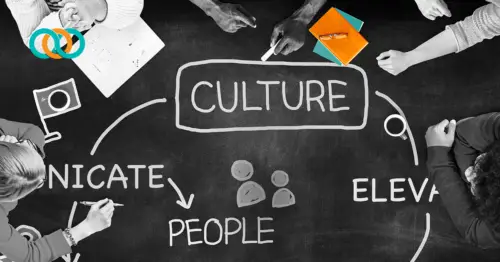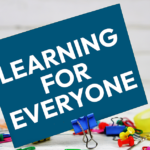- 6:04 to watch
- Introduction
- Transcript
When it comes to extended reality (XR) technologies like augmented and virtual reality (VR), the future has arrived for the learning and development (L&D) community. VR learning is quickly gaining momentum as a viable solution in training projects.
Instructional designers can now create immersive, realistic learning experiences in virtual environments that would otherwise be impossible to recreate in the real world.
Even though virtual reality as a learning solution is exciting and highly effective in the right situations, it is rarely the only answer. More often, VR learning content should be part of a more comprehensive blended learning solution for it to be the most effective.
Once you decide to create VR learning content, whether part of a more comprehensive solution or a stand-alone training resource, it is crucial to ensure your development process allows for any differences this new type of content may require.
In this video, Head of Learning Engineering at Talespin, Kristin Torrence, examines the six phases of VR learning development she utilizes and the importance of each.
Do you need resources skilled in design for immersive virtual reality? Contact us and we can provide you with the right L&D consultant experienced in development for virtual reality so you can start your project with confidence.
Speaker: Kristin Torrence, Extended Reality (XR) Learning Experience Designer & Head of Learning Engineering at Talespin
The VR Learning Development Process
The VR development process has about six phases. There is discovery, design, development, testing, deployment, and evaluation. You can see that this is an iterative process where data collected during testing and evaluation inform our design decisions.
Discovery Phase
We (at Talespin) typically kick off our process with the discovery phase and during this phase, our goal is to understand why the training is needed.
So we consult with stakeholders to identify the problem that we need to solve. Then we work with subject matter experts to identify the target behaviors, what success looks like, common mistakes or misconceptions, and then also emotional and motivational barriers that interfere with both learning and performance.
And then as an output of this phase, we identify the learning objectives for the VR solution. We dig into key learning points, identify competencies, and also the skills that we may look to target and track.
Design Phase
The design phase is where we translate the learning experience requirements that we outline into a virtual reality experience. To set the parameters we tend to design for the fulfillment of the learning objectives within the constraints of our own development capabilities.
Then we aim to design content that will resonate with the target audience and fulfill the learning needs in a really effective and impactful way. At this stage, we're also very concerned with ensuring that the experience is balanced and fair so that the learner also feels appropriately challenged but also never tricked.
Then of course we may get fun and engaging...the VR experience needs to be interesting. It needs to capture and sustain their focused attention and really motivate Learners to continue with the learning experience.
This includes maybe design elements such as interactions or characters or the storyline. We all sort of create this immersive experience that we want to make fun and engaging and exciting for the learners.
Development Phase
The development phase is where we bring this experience to life. So we marry the VR development capabilities with the experience design that fulfills the learning objectives of the module.
Here we also develop new features and functions as needed to accommodate our design needs and voice-over. Maybe performance editing to animate and provide realism to our virtual humans in our virtual modules is also done.
Testing Phase
The next phase is the testing phase. This phase is extremely important. We test for two primary reasons: one to validate our design decisions and two to find and fix as many bugs as possible.
So user testing is ideal to see if your design assumptions are correct. Your assumptions may be about the learner.
Their competency levels already may be the context of the scenario. Maybe some of your scaffolding decisions or your interactions and the feedback mechanisms that you've implemented.
So really any design decisions that you've made during the design process are up for validation.
Then this feedback from users really helps us iterate on the VR training to produce a module that's increasingly relevant and effective for the target audience. And of course catch and fix as many bugs as possible.
Deployment and Implementation Phase
Next, deployment and implementation. This is where the virtual reality training is published for consumption — making it available to learners on their headsets or on desktop streaming.
Now implementation again is dependent on how L&D teams wish to integrate the training into existing learning pathways.
It's somewhat rare that VR training is a standalone solution. It's almost always used to supplement existing training. So, you may also choose to build a blended learning solution around your VR training.
Evaluation Phase
Then lastly, in the evaluation phase, we collect feedback that informs our designs moving forward. So we investigate what do learners think about the experience? How engaged were they? Did the solution produce promising outcomes?
Then we collect data from sources such as performance metrics or usage data. We can administer surveys at this stage and also collect client feedback.
Both qualitative and quantitative data here can help us shed light about learners' experience with our training. Then we can use these findings to determine the changes for improvement for maybe our next iteration or carry these learnings forward to future projects; sort of best practices for design decisions.
- 8shares
- LinkedIn3
- Twitter1
- Facebook0
- Love This4









